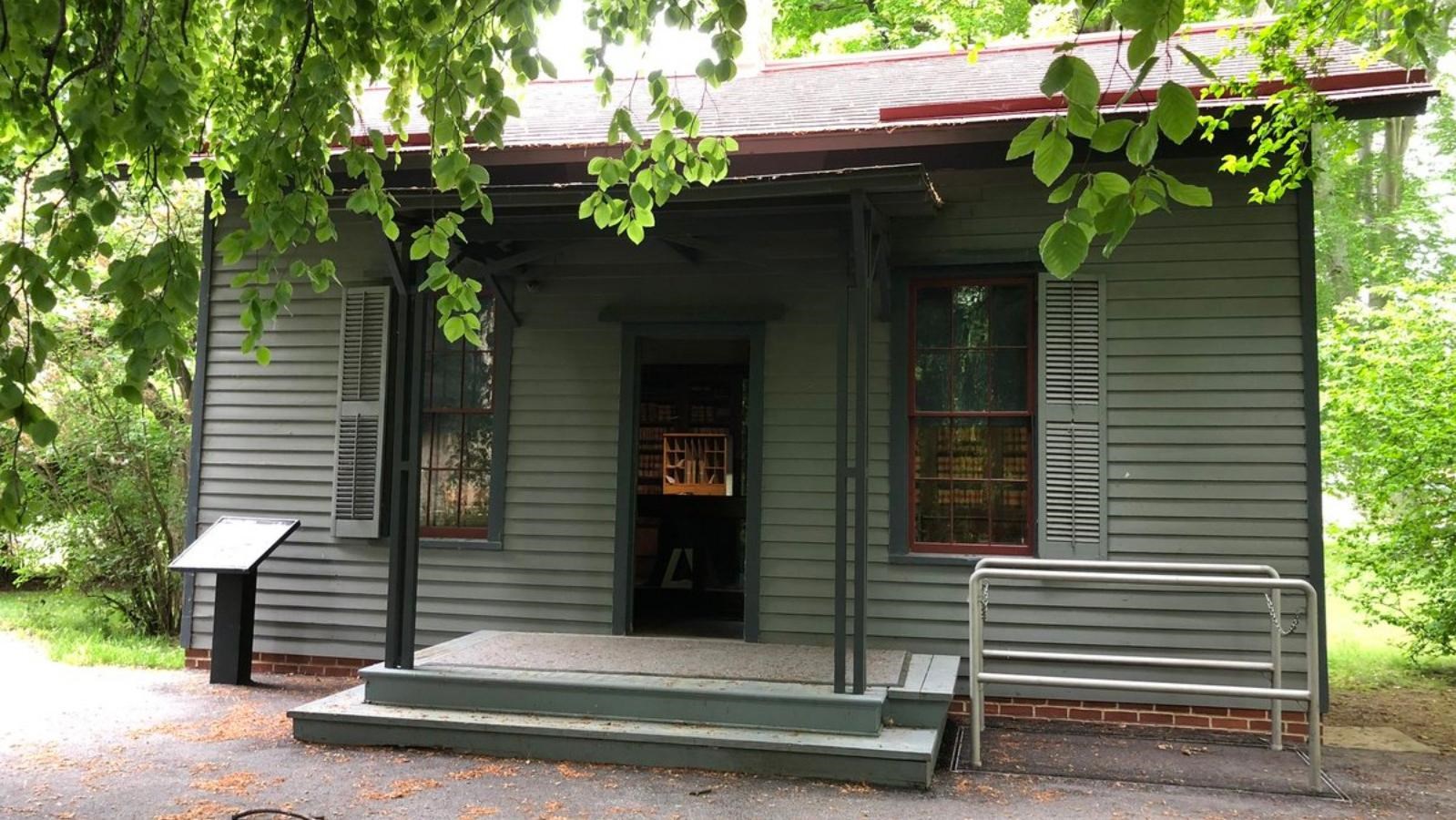Last updated: January 29, 2021
Place
Campaign Office of James A. Garfield

National Park Service
Quick Facts
Location:
James A. Garfield National Historic Site
Significance:
Campaign Office of Candidate Garfield During Campaign
Amenities
1 listed
Historical/Interpretive Information/Exhibits
In October 1876, when James and Lucretia purchased a farm in Mentor, Ohio, the property included a small building at the rear of the main farmhouse. It was used as a dormitory by farmhands. Garfield “resolved to gut the old house…and fit it up for a library.” By the following spring, he had hired a crew of carpenters to build large black walnut bookshelves. He even helped lay the flooring himself which he remarked about in his diary April 25, "old pleasure which I felt 27 years ago, when I learned how to lay flooring". As he moved into the building, he realized he had more books than he could store and had to have two more sets of shelving built. Some varnish on the floors and the hanging of a reading lamp completed the building on July 21, 1877, and it functioned as Garfield’s private library for the next few years.
The election of 1880 transformed it by necessity into a telegraph office, a consulting office, and what we now refer to as the Campaign Office. During the campaign, two telegraph lines were installed and ran directly to the desks. The building became a flurry of activity, with messages pouring in from all corners of the country. Garfield’s secretary Joseph Stanley-Brown and several staffers worked night and day inside, receiving and recording incoming messages. Stanley-Brown recalled that "the floor was almost always hopelessly littered with papers."
The Campaign Office had five desks, two telegraph sets, a wet press, and a large number of books. The telegraph operator, O.L. Judd, continued receiving messages on both telegraph sets in this building right up until the Garfield Family left for Washington, D.C. and Garfield’s March 4, 1881 inauguration as president. After his assassination in 1881, his wife Lucretia, built a memorial library in the main house. As the construction of the library began, the Campaign Office was moved to its current location behind the house. By 1895, the grandchildren used the building as a playroom.
The Garfield children: Harry, James, Mollie, Abram, and Irvin donated the family home and outbuildings to the Western Reserve Historical Society in Cleveland, Ohio, in 1936.
Joseph Stanley-Brown was asked for his recollection of what the Campaign Office was like when the WRHS was starting the restoration process. His response folllows:
The election of 1880 transformed it by necessity into a telegraph office, a consulting office, and what we now refer to as the Campaign Office. During the campaign, two telegraph lines were installed and ran directly to the desks. The building became a flurry of activity, with messages pouring in from all corners of the country. Garfield’s secretary Joseph Stanley-Brown and several staffers worked night and day inside, receiving and recording incoming messages. Stanley-Brown recalled that "the floor was almost always hopelessly littered with papers."
The Campaign Office had five desks, two telegraph sets, a wet press, and a large number of books. The telegraph operator, O.L. Judd, continued receiving messages on both telegraph sets in this building right up until the Garfield Family left for Washington, D.C. and Garfield’s March 4, 1881 inauguration as president. After his assassination in 1881, his wife Lucretia, built a memorial library in the main house. As the construction of the library began, the Campaign Office was moved to its current location behind the house. By 1895, the grandchildren used the building as a playroom.
The Garfield children: Harry, James, Mollie, Abram, and Irvin donated the family home and outbuildings to the Western Reserve Historical Society in Cleveland, Ohio, in 1936.
Joseph Stanley-Brown was asked for his recollection of what the Campaign Office was like when the WRHS was starting the restoration process. His response folllows:
"It was used by the former owner as a dormitory but when sold, the partitions were taken out and the single large room which resulted was devoted to office purposes. It remains partically unchanged from what it was as I first saw it, about the middle of June in 1880. Around the walls were bookcases extending almost to the ceilings, the base being widened out and enclosed by panelled doors. These small closets formed convenient places for the storage of stationary and other articles requiring protection. The book shelves were largely filled with government reports and other official publications that would not have graced the general household library, lodged (in) the enlarged residence.
The office was most meagerly furnished. A small upright globe-shaped stove, which burned hard coal, furnished heat as the autumn came on. There was a small flat topped table with one drawer. This was supplemented later by a carpenter-made cross-legged tabke about three feet by four feet... There were three or four chairs of style of that day, as indictated by the drawings. A small table carried a letter press and all communications sent out, if important, were duplicated by means of wet tissue paper sheets bound in book form."
Today, visitors can view the inside of the Campaign Office front door. There is a glass barrier between the artifacts and outdoor elements. The layout of the building is as when James A. Garfield used it during his campaign.
